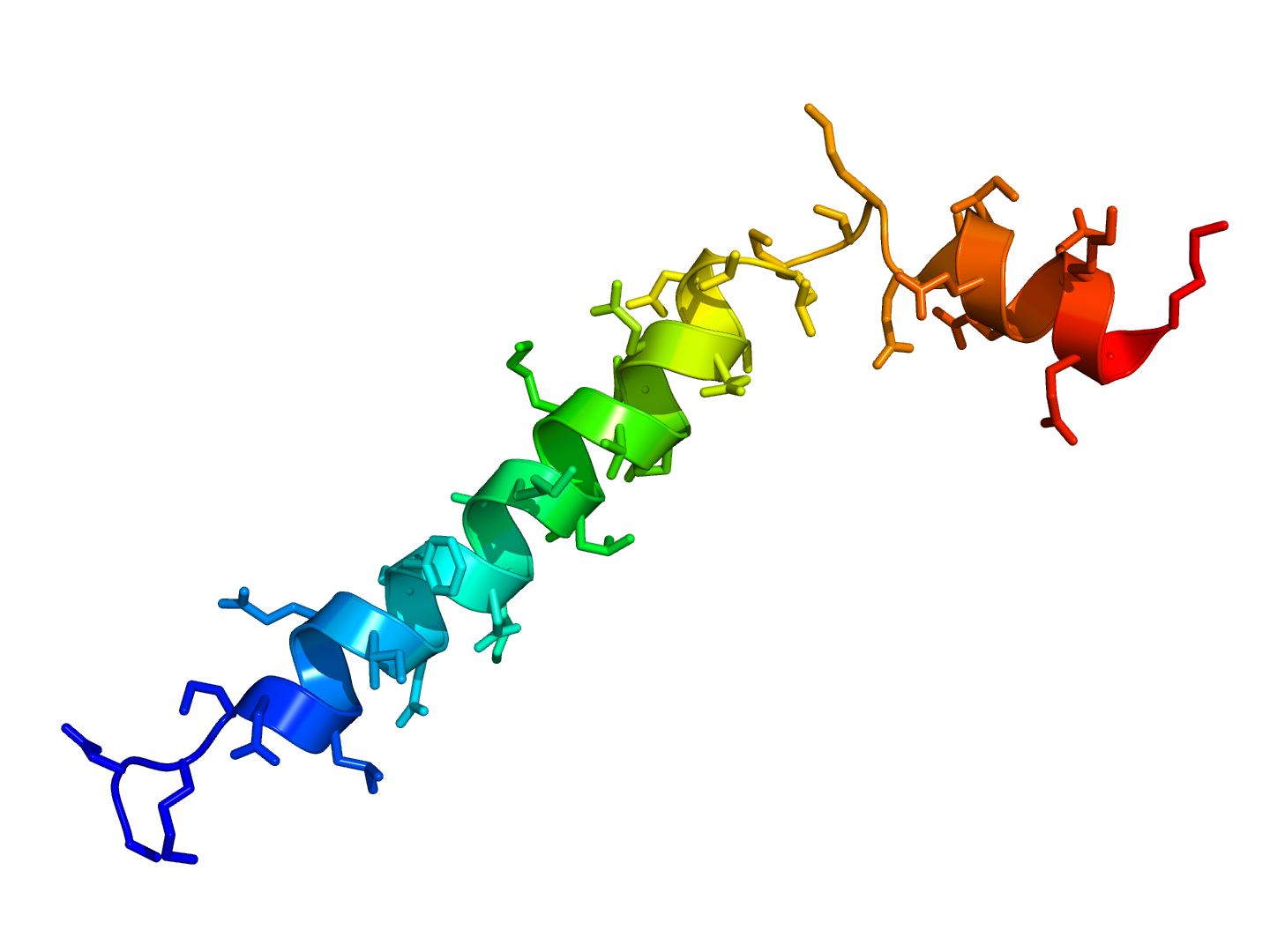Thymosin 1HJ0 on:
[Wikipedia]
[Google]
[Amazon]
 Thymosins are small proteins present in many animal tissues. They are named thymosins because they were originally isolated from the
Thymosins are small proteins present in many animal tissues. They are named thymosins because they were originally isolated from the
 Thymosins are small proteins present in many animal tissues. They are named thymosins because they were originally isolated from the
Thymosins are small proteins present in many animal tissues. They are named thymosins because they were originally isolated from the thymus
The thymus is a specialized primary lymphoid organ of the immune system. Within the thymus, thymus cell lymphocytes or ''T cells'' mature. T cells are critical to the adaptive immune system, where the body adapts to specific foreign invaders. ...
, but most are now known to be present in many other tissues. Thymosins have diverse biological activities, and two in particular, thymosins α1 and β4, have potentially important uses in medicine, some of which have already progressed from the laboratory to the clinic. In relation to diseases, thymosins have been categorized as biological response modifiers Biological response modifiers (BRMs) are substances that modify immune responses. They can be both endogenous (produced naturally within the body) and exogenous (as pharmaceutical drugs), and they can either enhance an immune response or suppress ...
. Thymosins are important for proper T-cell development and differentiation.
Discovery
The discovery of thymosins in the mid 1960s emerged from investigations of the role of thethymus
The thymus is a specialized primary lymphoid organ of the immune system. Within the thymus, thymus cell lymphocytes or ''T cells'' mature. T cells are critical to the adaptive immune system, where the body adapts to specific foreign invaders. ...
in development of the vertebrate immune system
The immune system is a network of biological processes that protects an organism from diseases. It detects and responds to a wide variety of pathogens, from viruses to parasitic worms, as well as cancer cells and objects such as wood splinte ...
. Begun by Allan L. Goldstein in the Laboratory of Abraham White at the Albert Einstein College of Medicine in New York, the work continued at University of Texas Medical Branch in Galveston and at The George Washington University School of Medicine and Health Sciences in Washington D.C. The supposition that the role of the thymus might involve a hormone
A hormone (from the Greek participle , "setting in motion") is a class of signaling molecules in multicellular organisms that are sent to distant organs by complex biological processes to regulate physiology and behavior. Hormones are required ...
-like mechanism led to the isolation from thymus tissue of a biologically active preparation. Known as "Thymosin Fraction 5", this was able to restore some aspects of immune function in animals lacking thymus gland. Fraction 5 was found to contain over 40 small peptides
Peptides (, ) are short chains of amino acids linked by peptide bonds. Long chains of amino acids are called proteins. Chains of fewer than twenty amino acids are called oligopeptides, and include dipeptides, tripeptides, and tetrapeptides.
A p ...
(molecular weights ranging from 1000 to 15,000 Da.), which were named "thymosins" and classified as α, β and γ thymosins on the basis of their behaviour in an electric field. Although found together in Fraction 5, they are now known to be structurally and genetically unrelated. Thymosin β1 was found to be ubiquitin
Ubiquitin is a small (8.6 kDa) regulatory protein found in most tissues of eukaryotic organisms, i.e., it is found ''ubiquitously''. It was discovered in 1975 by Gideon Goldstein and further characterized throughout the late 1970s and 1980s. Fo ...
(truncated by two C-terminal glycine residues).
When individual thymosins were isolated from Fraction 5 and characterized, they were found to have extremely varied and important biological properties. However they are not truly thymic hormones in that they are not restricted in occurrence to thymus and several are widely distributed throughout many different tissues.
Doping in sports
Thymosin beta-4
Thymosin beta-4 is a protein that in humans is encoded by the ''TMSB4X'' gene. Recommended INN (International Nonproprietary Name) for thymosin beta-4 is 'timbetasin', as published by the World Health Organization (WHO).
The protein consists (in ...
was allegedly used by some players in various Australian football codes and is under investigation by the Australian Sports Anti-Doping Authority for anti-doping violations.
Thymosin as a hair loss treatment
The process of hair growth utilizes many cellular and molecular mechanisms common to angiogenesis and wound healing. While studying the influence of thymosin beta-4 (Tβ4) on wound healing, Philp et al. accidentally found that hair grew more rapidly around the edges of wounds. In due course, they showed that Tβ4 induced rapid hair growth on the dorsal skin of healthy mice.See also
*Thymosin α1
Thymosin α1 is a peptide fragment derived from prothymosin alpha, a protein that in humans is encoded by the ''PTMA'' gene.
It was the first of the peptides from Thymosin Fraction 5 to be completely sequenced and synthesized. Unlike β thymosins ...
* Beta thymosins
Beta thymosins are a family of proteins which have in common a sequence of about 40 amino acids similar to the small protein thymosin β4. They are found almost exclusively in multicellular animals. Thymosin β4 was originally obtained from the ...
References
;Notes ;Sources *Koh, B. (2013). Cronulla Sharks and thymosin beta-4 ... is it doping? Retrieved from http://theconversation.edu.au/cronulla-sharks-and-thymosin-beta-4-is-it-doping-12694External links
* {{Hormones Hormones of the thymus gland Hormones of the immune system